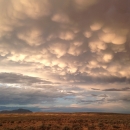San Miguel Basin Wet Meadow Restoration Project
Funding Year | Amount | Location |
FY24 | $261,216 | San Miguel County |
Project Description
Wet meadows and riparian riparian
Definition of riparian habitat or riparian areas.
Learn more about riparian areas are critical habitat for many sagebrush sagebrush
The western United States’ sagebrush country encompasses over 175 million acres of public and private lands. The sagebrush landscape provides many benefits to our rural economies and communities, and it serves as crucial habitat for a diversity of wildlife, including the iconic greater sage-grouse and over 350 other species.
Learn more about sagebrush obligate species and are vital to Gunnison sage-grouse by providing important brood-rearing habitat. Degradation of these areas require this funding to be used to plan and implement restoration projects using several methods and infrastructure to help slow down water during runoff events, raise water tables, reduce erosion, stabilize head cuts, reconnect channels to floodplains, and increase cover of wetland plants.
Partners
Rocky Mountain Wild



